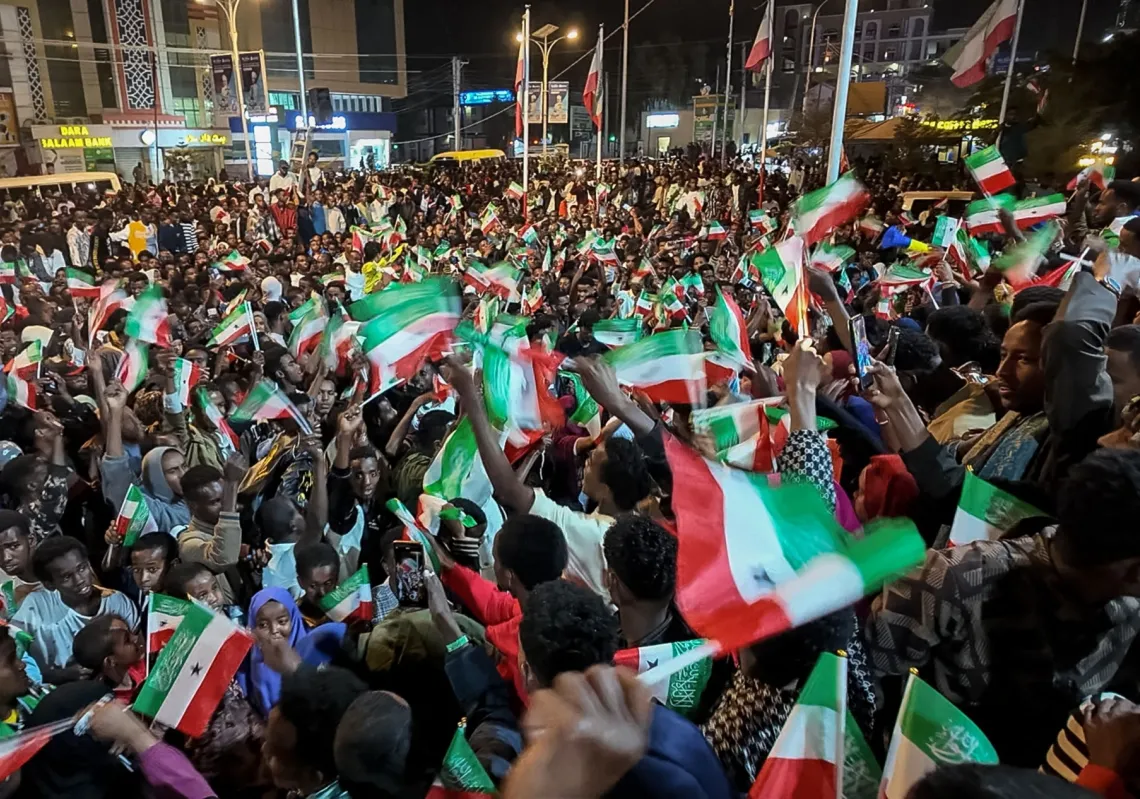The Syrian security authorities continue to release dozens of detainees after the Syrian regime President Bashar al-Assad issued an amnesty for the “terrorist crimes” committed and for which Syrians were convicted before the decree was issued last Saturday, April 30, 2022. The amnesty, however, excludes those convicted of “terrorist” crimes that resulted in the death of a human being.
The exact number of prisoners released as per the presidential amnesty is not known. Nonetheless, the Syrian Observatory for Human Rights documented the release of 150 prisoners 48 hours after the amnesty was issued. These included people who were arrested 10 years ago and were languishing in Saydanaya Military Prison, which Amnesty International described as the "human slaughterhouse" after documenting the execution of about 13,000 prisoners between 2011 and 2015.

Regime Attempts to Whitewash its Image Through Amnesty
It seems that issuing an amnesty law for terrorist crimes that did not lead to the death of a human being comes as an attempt by the Assad regime to whitewash its image and exploit the amnesty in order to evade the serious violations it committed in its prisons for more than a decade. This is highly probable with the successive international reports and pressure from humanitarian and human rights organizations regarding the torture and serious human rights abuses that took place in prisons and detention centers. Data by the Syrian Observatory for Human Rights reveal that more than 105,000 detainees have been killed under torture inside the prisons of the Assad regime since the start of the Syrian revolution in 2011.
Majalla obtained leaks from the Syrian capital of Damascus indicating that the security authorities want to release more detainees as per the recently issued amnesty. This would mean the release of tens of thousands of prisoners who had been languishing in the Syrian regime’s prisons for years.
Amnesty was issued after the release of video clips documenting bloodbaths in prisons
The presidential amnesty was issued days after the Guardian published an expansive journalistic investigation that documented the killing of tens of people by regime forces. The published video clips propelled a shock wave amongst Syrians, especially human rights organizations and civil society institutions.
The tens of video clips released last week date back to 2013. One video shows a member of the regime forces asking handcuffed and blindfolded people to run before getting shot as they would fall in a pit where other bodies piled up. This took place in Tadamon neighborhood located in the southern Damascus countryside. This video turned out to be documentation of the crime that became known as the “Tadamon massacre.”
The 27 clips were published along with a lengthy journalistic investigation report conducted in cooperation between the Guardian and the USA’s New Lines Institute. Several families were able to recognize their children from the videos that showed how they were killed with cold blood. The number of men who were killed with their bodies burned in the pit totaled 41, according to the videos that were widely circulated on social media and stirred popular anger.
Detainees’ Families Struggle to Recognize their Sons!
Sources told Majalla that the Tadamon massacre’s victims included 16 Palestinian-Syrians. However, it was not possible to verify their exact identities.

Members of three Syrian families who have detainees in the regime’s prisons for years said, “These clips depict extreme brutality. We tried to identify our sons to know if they were killed. However, the torture marks altered their shapes and features, rendering identifying our sons a very difficult and impossible task.”
Talking to Majalla, another Syrian, whose son was imprisoned in Damascus in 2012, called on international human rights organizations to prosecute the Assad regime for committing heinous crimes. Since the start of the war, the Syrian regime has been accused of violating human rights, from torture in prisons, to rape and sexual assaults, and even extrajudicial executions.
For his part, a Syrian human rights defender said, “The videos are not new, but old. They have been around for years being held by the person who filmed them. However, the journalistic investigation took years, and that is why they were only recently published.”
Decree Issue to Divert Attention from Tadamon Massacre
Fadel Abdul Ghany, chairman of the Syrian Network for Human Rights, explained to Majalla that “the amnesty recently issued by the regime comes to divert attention from the Tadamon massacre and other videos. It is useless, however, as 132,000 detainees are currently languishing in the regime’s prisons.”
He added that “the decree includes limited numbers of prisoners because some detainees are subject to dozens of charges. For example, if a detainee was entitled to the amnesty over a mentioned charge, he would still have several other charges that are not covered by the amnesty. Accordingly, he would remain behind bars.”
Abdul Ghany underlined that “the regime is trying to divert attention from the videos convicting it. As a result, pro-regime media outlets circulated reports of an assassination attempt. All these attempts aimed to turn the page of the Tadamon massacre and other videos documenting violations that not only include killing, but also rape, looting of property and other patterns of human rights violations.”
Amnesty will not Include Prisoners of Conscience and Political Prisoners
He stressed that “the amnesty decree has not yet been applied in order to find out the number of those included. However, I believe that it will not include prisoners of conscience and political prisoners. Only one batch was released from Saydanaya Military Prison, but the numbers were very limited.”
He pointed out that “large numbers of prisoners will not be covered by the amnesty because there are those who have been detained for years and have not been tried in the first place. These also amount to huge numbers.”
He considered that “these videos put great pressure on the regime, especially since such videos have not been published for a long time. We have seen their impact and resonance with regime supporters as well, and the US State Department has had its say on them. This means that other countries will act on these videos, in addition to the United Nations and the International Commission of Inquiry on the Syrian Arab Republic.”

Tadamon Massacre Exerts Pressure on Assad
Abdul Ghany indicated that “the video clips will receive great attention and accordingly will be in the spotlight. We, at the Syrian Network for Human Rights are working to identify the victims' identities, and we will be issuing a special report about them.”
He stressed that “hundreds of those forcibly disappeared by the regime may be among those who appeared in the videos documenting their killing. Accordingly, there are fears about the fate of hundreds of detainees in the Tadamon suburb and tens of thousands arrested by the regime and its Shabiha, especially since large numbers of Shabiha have their own means of getting rid of detainees’ corpses, such as incineration for example.”
Decree is Ambiguous and the Prosecution will Manipulate It
The Director of the Syrian Network for Human Rights explained what he called the ambiguous aspects of the amnesty decree that was issued after the publication of videos confirming the regime's perpetration of brutal crimes against its prisoners.
In this regard, he said, “This decree has many ambiguous aspects. Unlike previous decrees that clearly specified the numbers of legal articles covered by the amnesty, this decree did not specify the legal articles covered by the amnesty from the Penal Code promulgated by Legislative Decree No. 148 of 1949.”
He added that “applying this decree for detainees who have not been convicted is almost impossible because the Public Prosecution will not be able to determine the legal articles under which they were detained. After all, they have not yet been tried and the security authorities will therefore not release most of the detainees.”
He continued, “There are many detainees who have been sentenced under several laws and legal articles. This means that the amnesty decree includes some of them and excludes others. Therefore, these detainees would not benefit from the decree, which includes an amnesty for the crimes stipulated in only one of the three terrorism laws issued in 2012, which is Law 19. It excludes, however, Laws 20 and 21 of 2012 related to laying off employees and kidnapping people.

No Guarantee for Those Who Turn Themselves in If They Live Abroad
Abdul Ghany suggested that “the judges of the Public Prosecution in charge of implementing the decree will deal with it in the same way they dealt with previous decrees. They will manipulate it by altering the legal description of the crimes convicted and detained.
Accordingly, it is unlikely that the decree will be implemented under their oversight. Therefore, neither this decree nor any other decrees issued by the regime have any credibility. Trust is lost in this regime that will not guarantee the amnesty for the refugees who are abroad.
Accordingly, these will not turn themselves in because previous incidents are evident of the regime’s treachery. There are many cases of those who turned themselves in after the amnesty of the crimes of internal and external fleeing. However, they were arrested and their families do not know their fate until today.”
A few days ago, the President of the Syrian regime issued Legislative Decree No. 7 of 2022, which stipulates, according to the text of the decree published by pro-Assad media, “granting a general amnesty for terrorist crimes committed by Syrians before April 30, 2022, except for those that led to the death of a human being, and stipulated in the Anti-Terrorism Law No. 19 of 2012 and the Penal Code promulgated by Legislative Decree No. 148 of 1949 and its amendments.”
“This amnesty does not affect the private right of action, and the damaged person may, in all cases, file his case before the competent civil court,” according to reports by Syrian state media.
For the first time, this presidential decree does not require that the wanted person surrender himself to justice, as stated in previous decrees. According to the Syrian Observatory for Human Rights, this means dropping the penalty completely from detainees without referring them to any security branches or local courts.
* Jiwan Soz is a researcher and journalist who focuses on Syrian and Turkish affairs and minorities in the Middle East. He is also a member of Syndicat National des Journalistes (National Syndicate of Journalists [SNJ]). He tweets at @JiwanSoz1











